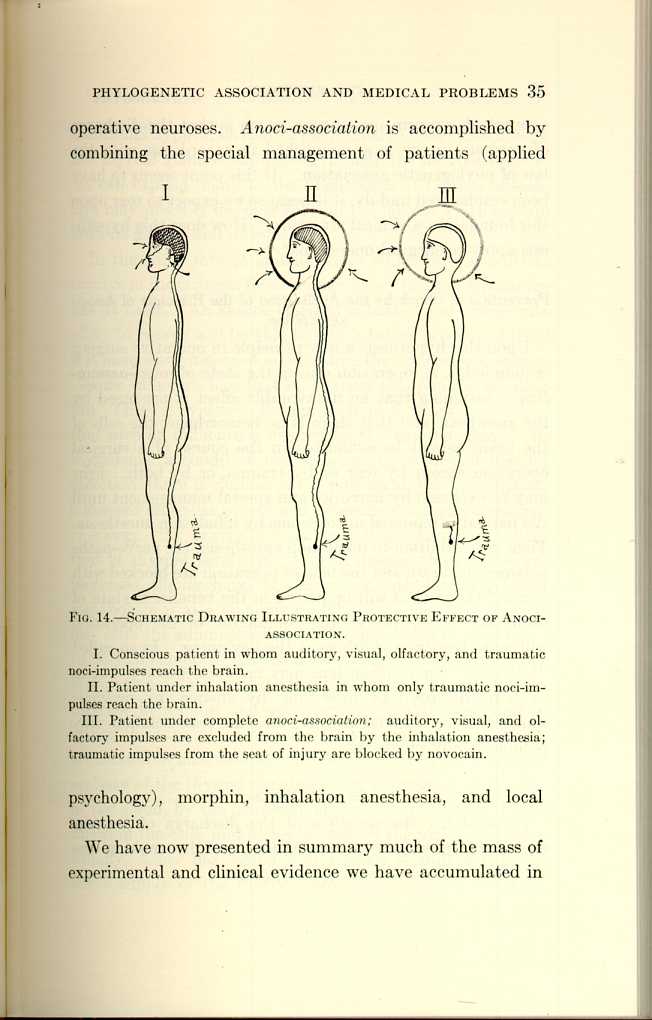| The Origin and Nature of the Emotions: Miscellaneous Papers | ||
Anoci-association
By the law of phylogenetic association, we are now prepared to make a practical application of the principles of the discharge of nervous energy. In the case of a surgical operation, if fear be excluded and if the nerve-paths between the field of operation and the brain be blocked with cocain,[5] no discharge of energy will be caused by the operation; hence no shock, no exhaustion, can result. Under such conditions the nervous system is protected against noci-association, resulting from noci-perception or from an adequate stimulation of nociceptors. The state of the patient in whom all noci-associations are excluded can be described only by coining a new word. That word is "anoci-association" (Fig. 14).
The difference between anesthesia and anoci-association is that, although inhalation anesthesia confers the beneficent loss of consciousness and freedom from pain, it does not prevent the nerve impulses from reaching and influencing the brain, and therefore does not prevent surgical shock nor the train of later nervous impairments so well described by Mumford. Anoci-association excludes fear, pain, shock, and post-operative

FIG. 14.—SCHEMATIC DRAWING ILLUSTRATING PROTECTIVE EFFECT OF
ANOCI-ASSOCIATION.
I. Conscious patient in whom auditory, visual, olfactory, and traumatic
noci-impulses reach the brain.
II. Patient under inhalation anesthesia in whom only traumatic
noci-impulses reach the brain.
III. Patient under complete anoci-association; auditory, visual, and
olfactory impulses are excluded from the brain by the inhalation anesthesia;
traumatic impulses from the seat of injury are blocked by novocain.
[Description: Black-and-white illustration in three parts showing person with
trauma to leg under various states of anesthesia.]
We have now presented in summary much of the mass of experimental and clinical evidence we have accumulated in
| The Origin and Nature of the Emotions: Miscellaneous Papers | ||